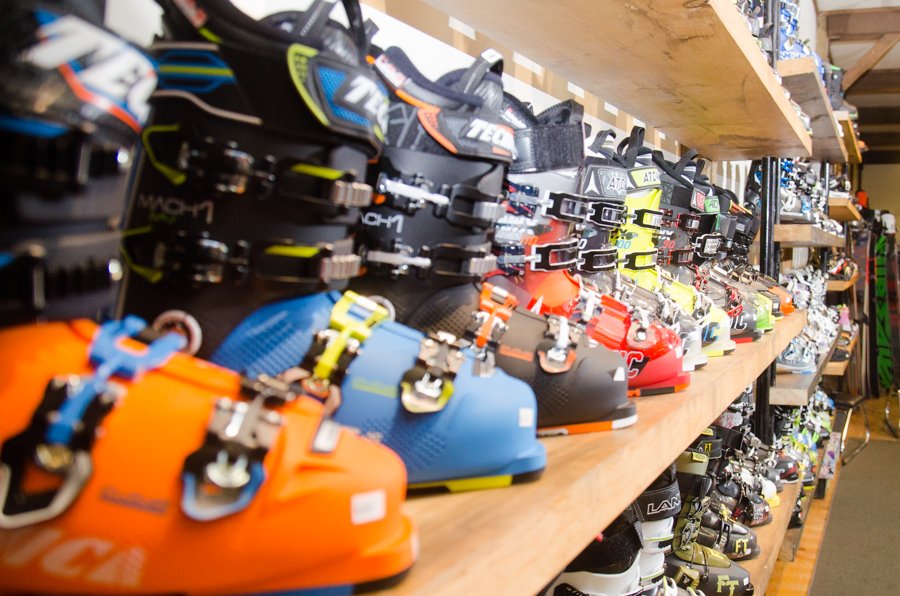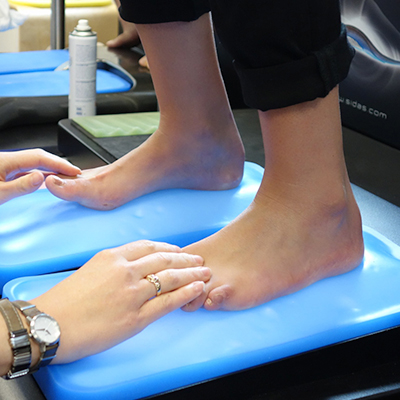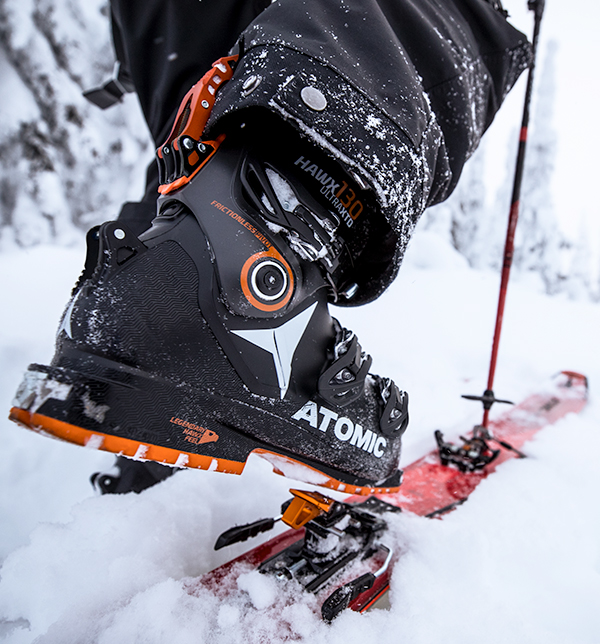How do you choose ski boots? We asked Michelle Wilcox, Ski Lab Manager at Profeet - ski boot fitting specialists.
How do you choose ski boots? We asked Michelle Wilcox, Ski Lab Manager at Profeet - ski boot fitting specialists - and she gave us the following key points to look out for:
1. If you are going to buy one piece of kitm then make it ski boots
2. Getting the right boot size is about more than just getting your foot measured
3. Change your boots every 180 days skiing or every 5-6 years
4. If you get cold feet, then get your boots checked for size
5. Make sure you get a good custom ski insole
6. If you struggle with a comfortable fit or are looking for extra performance then consider custom-made liners
7. If you like off-piste/back country skiing, then consider a ‘Hike and Ride’ boot
8. Trends in boots are towards less forward lean and a lower internal ramp angle
9. Find a specialist shop with the knowledge to examine your feet and understand your needs
10. Expect to invest some time on the process
- If you are going to buy one piece of kit make it ski boots
On average skiers rent boots one or even two sizes too big. Boots that are too big increase the risk of injury, as the foot can twist inside the boot, as well as reducing control over your skis.
Rental boots (even performance rental boots) are made to a price and use cheaper foams in the inner boot that won’t fit as well and that get squashed to every foot shape that uses them, so losing shape, reducing foot hold and comfort after just a couple of rentals.

- Getting the right boot size is about more than just getting your foot measured
An experienced boot fitter will take the time to look at how the shell (the hard plastic part) fits your foot without the liner (the soft foam part) in order to establish the correct size.
There are many subtle differences between shells and an experienced fitter will start by making sure you are in the right shell for your foot shape and ability.
- Change your boots every 180 days skiing or every 5-6 years
Ski boots wear out: the foam gets thinner and loses support with use and time; the sole wears out affecting safety with the binding; and plastics get brittle.
Ski boot technology also improves on roughly a five year cycle as new design concepts are released by the manufacturers. - If you get cold feet, then get your boots checked for size
In many cases, poor circulation is due to a badly fitting ski boot. If you still get cold feet (many people will in any case as a ski boots are typically a snug fit and can impair circulation when you're not moving) then invest in premium ski socks (merino wool is best for cold feet) and electric ski boot heaters – which are even used by the top world cup racers!
- Make sure you get a good custom ski insole
Your feet need to support your body, and like a tall building, need strong foundations. Without these foundations the bone structure collapses, especially when doing a dynamic sport you may not be used to.
Combine this with a rigid ski boot and something’s got to give, usually the foot which ends up rubbing or pushing into the boot causing pressure, pain and blisters. In addition custom insoles improve balance and ski control by increasing contact with your foot.

- If you really struggle with a comfortable fit or are looking for that extra performance then consider custom made liners
Liners are the soft inner part of the boot. There are various types but the two most popular are Foam Injected liners, which are great for a firm performance fit and EVA Thermo Mouldable liners that are great for comfort and warmth. Make sure you see a specialist with a choice of liners that can recommend the right type for you. - If you like off-piste/back country skiing, then consider a ‘Hike and Ride’ boot
These are high performance ski boots made predominantly for downhill skiing with added backcountry features such as more flexible walk and hike modes, shock absorbing baseboards and non-slip soles. Some even have interchangeable soles for ski-touring binding compatibility.

- Trends in boots are towards less forward lean and a lower internal ramp angle
The 'ramp angle' refers to the ramp from toe to heel and a lower angle makes for a more natural and less fatiguing ski stance and works far better with modern shaped skis.So a lower angle means less strain on your muscles, meaning a new pair of boots might help you get that bit more out of your legs. - Find a specialist shop that has all the knowledge to examine your feet and understand your skiing needs
We always recommend Profeet in Fulham, south-west London. Their ski boot lab staff are experienced skiers and boot fitters and are additionally trained by in-house podiatrist and bio-mechanist Paul O’Malley (MSc) in more complex feet and ankle issues. - Expect to invest some time
A good ski boot fit will take about two hours and should include having an insole fitted either off-the-shelf or custom made. The insole will provide a solid foundation for your foot and ankle and reduce pressure points caused by your foot moving or collapsing as you ski. You don’t want to ruin your amazing ski holiday by trying to save on some time - it will make all the difference for you later.
Guest post by Michelle Wilcox: 'My role at Profeet is Senior Boot Technician. I am one of the youngest members of the BSBA.'
